Lafayette City Logo Contest Deadline



612-460-5851
The Saint Peter Daddy-
Daughter Dance was held on Saturday at the Saint Peter Community Center. The dance ran from 6 to 8 p.m. The event is quite popular and draws many fathers and
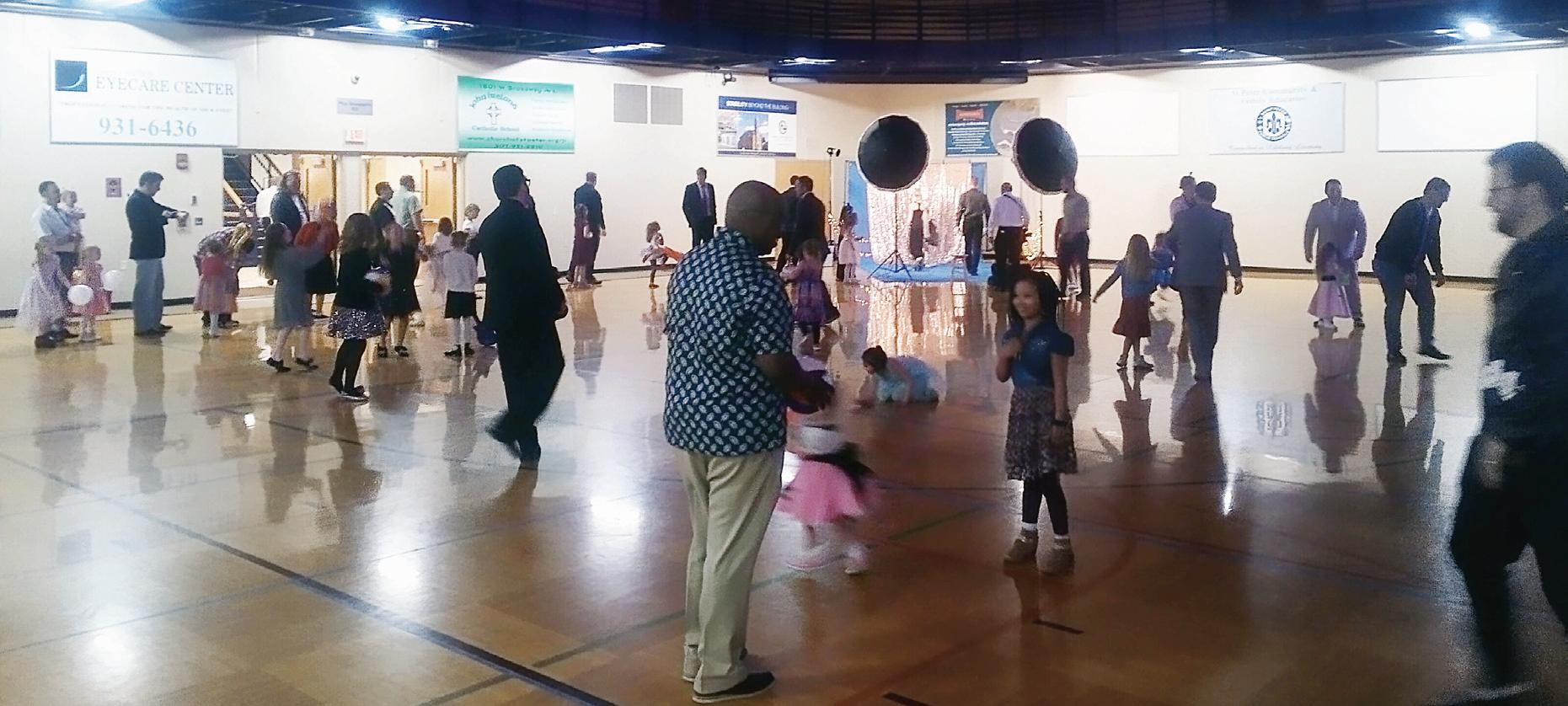
their daughters from the community, and allows a good time for fathers to bond with their daughters. There was a DJ play-
years. 1111 Holdings, run by Mad DeMars and Marty Walgenbach, have agreed to purchase it. They plan to build housing and commercial spaces at the site, which will encompass 120,000 square feet.
Continued
By Robert Lawson Publisher info@nicolletcountyledger.com612-460-5851
The Saint Peter City Council held its regular council meeting on February 27 to discuss a range of issues such as a DNR grant deed restriction requirement, a “no-mow May” program, Parkview Manor improvements and the project administration contract, 2022 MnDOT delegated contract process

agreement, request for bids on a refuse hauling contract, Flagstone TEFRA host approval and a tobacco license application.
The council started unfinished business discussing the deed restriction for requirements that the park essentially remain a park, according to City Administrator Todd Prafke.
In August 2021, the city of Saint Peter was awarded a Minnesota Department of Natural Resources (DNR) grant for recreation. The grant funds were to be used for

the purposes of creating trails and walkways and a parking lot within Minnesota Square Park. As part of the requirements, the property’s deed must have restrictions recorded. The restrictions include permanent management and maintenance of the property
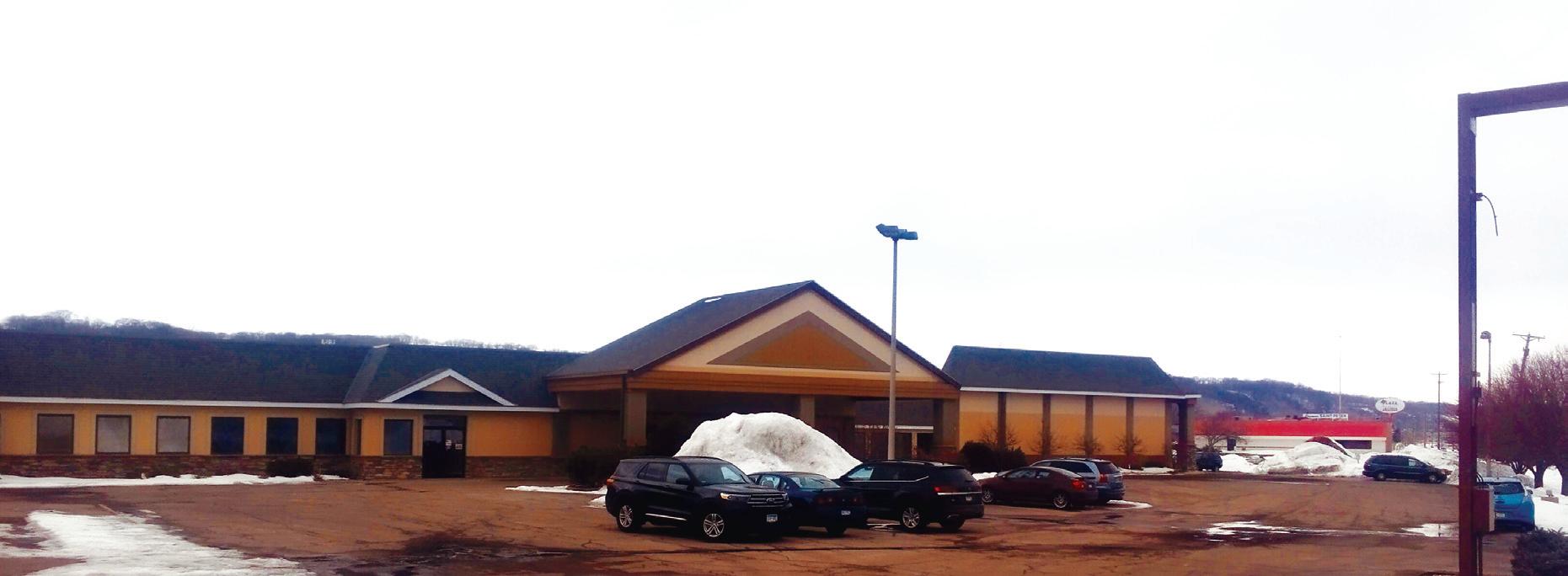
to take part in music and dance accompanied by an assortment of beer provided by craft brewery August Schell.
Visitors from near and far ascended upon New Ulm this weekend for festivities at the famous annual Bockfest held at and sponsored by August Schell Brewery.

Attendees who purchased a wristband at the event were able
The event is a tribute to good drink, good times and German and Bohemian heritage in the area. The city of New Ulm was once recognized by U.S. News and World Reports for being the least diverse community in the country, as more than 90

The New Ulm Diocesan Council of Catholic Women is planning its 62nd Annual Convention, to be held at the Church of St. Mary in New Ulm on April 29, 2023.
The New Ulm Diocesan Council of Catholic Women strives to be wise, courageous and loving leaders of the Church, as is noted in the Prayer to our Lady of Good Counsel. With this in mind, we chose to have the theme of our 62nd Annual Convention be in alignment with the National Eucharistic Revival. The theme “I AM the Bread of Life” is fulfilled through both our keynote and afternoon speakers, as well as The Vatican International Exhibition Eucharistic Miracles of the World, on loan to us from Spirit Catholic Radio.
The day will begin with registration and breakfast at 7:30 A.M., keynote in the morning, Holy Mass, lunch, a silent auction, various displays, vendors, religious article suppliers, an afternoon speaker, and conclude with the Divine Mercy Chaplet at 2:30 P.M.
Our keynote speaker is Liz Kelly, whose talk will focus on Blessed Benedetta Bianchi Porro, and is titled “She Held Jesus in Her Palm, Meet
Shirley Marie Michels, age 87, of North Mankato passed away on Friday, February 24, 2023. Visitation will be held from 4-7pm, Wednesday, March
Blessed Benedetta Bianchi Porro.”
Her story is very powerful, relatable and she had a great charism for our Eurcharistic Lord. Liz is a graduate of New Ulm’s Cathedral High School, is a retreat leader and the award-winning author of ten books. Her most recent book, Love Like A Saint, Cultivating Virtue with Holy Women (March 2021) has been called “penetrating and graceful,” “a source of encouragement and hope,” and “a beautiful deep dive into the lives of inspirational, holy women.”
Kelly has appeared on Relevant Radio, Catholic Answers, Radio Maria, Public Radio, Boston Catholic Television, EWTN and Salt and Light Television. From 2008 to 2022, she served as the managing editor of Logos: A Journal of Catholic Thought and Culture at the University of St. Thomas (MN) and taught in the Catholic Studies program. She is cohost, along with David Deavel of the Logos podcast, Deep Down Things. She lives with her husband, Vincent, an architect, in Minnesota. Visit her website at LizK.org.
Our afternoon speaker, Berny Berger, will be presenting the story of Blessed Carlo Acutis, from Milan,
8, 2023, at Northview - North Mankato Mortuary. Mass of Christian Burial will be 11am, Thursday, March 9, 2023, at St. Paul’s Catholic Church in Nicollet with visitation one hour prior. Burial will be in St. Paul’s Catholic Cemetery in Nicollet. Please share a memory of Shirley and watch her service livestreamed at www.mankatomortuary.com.
Shirley graduated from Nicollet High School in 1953, where she met Ronald Michels, the love of her life for 57 years.
Shirley was passionate about nursing, graduating from St. Mary’s Nursing School Rochester MN District 18, to work at St. Joseph’s Hospital. She would later become the School Nurse at Nicollet High School.
Shirley had a strong faith and was a long-time member of St. Paul’s Catholic Church. She loved her Minnesota Twins, crossword puzzles, solitaire,

Italy, and feature the video – “I Am With You” (EWTN). She will also include in her presentation, stories of Eucharistic Miracles documented by Blessed Carlo. Berny is the CCW president at St. Willibrord’s in Gibbon.
The Vatican International Exhibition Eucharistic Miracles of the World was designed and created by Blessed Carlo Acutis. Carlo, an artist, cartoonist and avid computer enthusiast, created the art for the panels before his death from leukemia at age 15. His goal during his short life was to help bring others closer to Jesus through awareness of the mystery of the Eucharist. Carlo received the sacrament of the Eucharist daily and desired to share the joy of Christ’s presence with the world through his God-given talents. Check out the website about Blessed Carlos at https://carloacutis-en.org . You can also see all the panels in his exhibit at http://www.miracolieucaristici.org/ en/Liste/list.html . Join us for a day of prayer, education, and the opportunity to socialize with the women of the Diocese of New Ulm. Registration information can be found at www.nudccw.org .
travel, and her family. She had a sharp and intelligent mind, with an amazing memory. No matter what physical limitations life threw at her, she always maintained grace, dignity without complaints.
Shirley is survived by her children, Scott (Ann) Michels, and Sheila (Steve Radke) Michels; grandchildren, Zachary Johnson, Amelia (fiancé, Colton Kramer) Michels, and Walter Michels; siblings, Patrick Sullivan, and Steve (Arlene) Sullivan; sistersin-law, Lois Jagerson, Myrna Yenter, and Rita Michels, as well as many nieces, nephews, and friends.
Shirley was preceded in death by her husband, Ron Michels; parents, George and Cecilia Sullivan; sister-in-law, Joan Sullivan; brothers-in-law, Jim Jagerson, and David Michels.
Special thank you to Sara McMichael and others at Freedom
The forty days of Lent prior to our celebration of our Lord’s resurrection on Easter are a time for deep meditation on our Lord’s sufferings, as well as a time for sincere repentance for our sins which helped nail Jesus to the cross. An old Lenten hymn puts it this way. “Do we pass that cross unheeding, breathing no repentant vow, though we see Thee wounded, bleeding, see Thy thorn-encircled brow?”
In his first thesis of the 95 Theses that Dr. Martin Luther wrote in 1517, Luther stated, “Our Lord and Master Jesus Christ, in saying, ‘Repent!’ intended that the whole life of His believers on earth should be one of continual repentance.”
Additionally, in explaining the significance and meaning of baptism, Luther wrote in his Small Catechism: “It indicates that the Old Adam in us should by daily contrition and repentance be drowned and die with all sins and evil desires, and
that a new man should daily emerge and arise to live before God in righteousness and purity forever.”
So, which sins should we be sorry for and repent of? Here it is helpful to examine our lives in light of what the Ten Commandments command and forbid. We might ask a series of questions, like the following. Is God always first in my life?
Is God’s holy name honored by my lips and life? Do I keep the Sabbath holy? Have I honored and obeyed those in authority over me? Have I hurt someone by my words or deeds? Have I honored marriage in my life? Have I stolen or cheated?
Do I defend my neighbor or demean him? Have I engaged in sinful desire by coveting what I want from my neighbor? Am I content and thankful?
Repentance involves a number of steps, which we may trace using several other words beginning with the letter “r.” Repentance involves realizing wrong in my life. Repentance involves regret or contrition or sorrow for our sins. Repentance involves returning
something unjustly taken. Repentance is followed by the receiving of forgiveness and grace from God and from our neighbor. Lent is a call to repentance. Especially, it is a call to turn from sin and return to the Lord God. In our hymnal, we have a precious Lenten response we sing prior to the Gospel reading, which is taken from Joel 2:13. “Return to the Lord, your God, for He is gracious and merciful, slow to anger, and abounding in steadfast love, and abounding in steadfast love.” Another favorite Lenten call of mine comes from James 4:7-10. I hope it will speak to you as well. May it bless your Lenten meditations and actions. Submit yourselves, then, to God. Resist the devil, and he will flee from you. Come near to God and He will come near to you. Wash your hands, you sinners, and purify your hearts, you double-minded. Grieve, mourn and wail. Change your laughter to mourning and your joy to gloom. Humble yourselves before the Lord, and He will lift you up.
The USDA Farm Service Agency (FSA) has announced a sign-up period for the Conservation Reserve Program (CRP) in 2023 that will extend from Feb. 27 through April 7 at local FSA offices. The current CRP sign-up period will be for renewing existing CRP contracts and adding farmland acres into the General CRP program. Landowners can sign-up for the Continuous CRP program throughout the year, and the sign-up period for the Grassland CRP program will be announced by the USDA at a later date. The CRP program is offered on a voluntary basis through the USDA. The CRP program can be used as a tool by landowners and the agricultural community to invest in the longterm protection and well-being of their land and natural resources.
The CRP program has a long history of promoting conservation practices and farmland stewardship in the United States. The CRP program was established in December of 1985 as part of the 1985 farm bill and has remained part of every farm bill since that time. The maximum acreage and primary goals of the CRP program have changed over the years; however, the CRP program has been a centerpiece of the Conservation Title every time a new farm bill has been written. There may be some adjustments to the CRP program; however, CRP will likely remain a key component of the Conservation Title when the next farm bill is completed later this year or beyond.
There are three different CRP programs that agricultural producers and landowners can enroll in:
• General CRP — The General CRP program has only been altered slightly since the CRP program was initiated in 1985. The goal of the General CRP program is to offer producers and landowners the opportunity to put larger land parcels into a 10-year or 15-year CRP contract, and in return receive an annual rental payment from the USDA for the acres of tillable farmland that are enrolled into CRP. The CRP acres are usually seeded
into approved long-term grasses and trees to control soil erosion, improve water quality and enhance wildlife habitat. More recently, the General CRP program also includes climatesmart practices to help increase carbon sequestration and the removal of greenhouse gases. Landowners offer land into the General CRP program through a bidding process that includes an acceptable CRP rental rate for the length of the contract. The General CRP rental rates cannot exceed 85% of the average cash rental rate in a given county. The USDA evaluates all bids submitted through an Environmental Benefits Index (EBI), which takes into account the value of the land parcel for protecting the soil, improving water quality, enhancing wildlife habitat and reducing greenhouse gases, as well as considering the annual cost based on the desired rental rate. A total of 2.1 million acres in the U.S. were accepted through the General CRP sign-up period in 2022, representing approximately 90% of the acres that were offered for bid.
• Continuous CRP — Under Continuous CRP, landowners and producers can enroll in the CRP program at any time during the year.
The USDA accepts all land parcels that are offered through Continuous CRP into the CRP program, provided that the land meets the established requirements for the program.
Many times, Continuous CRP is used on smaller land parcels that have specific environmental benefits, such as near rivers, streams or drainage ditches, or to re-establish wetlands. The last farm bill set the maximum annual payment rate for Continuous CRP at 90% of the average county rental rate; however, there has been legislation passed by Congress since the last farm bill that has enhanced some financial opportunities through the program. The Continuous CRP program can be part of special programs such as the Conservation Reserve Enhancement Program (CREP), the State Acres for Wildlife Enhancement (SAFE) program, and the Clean Lakes, Estuaries, and Rivers Initiative (CLEAR30). Many times, these special programs are only offered
Charles “Charlie” A. Vogel, age 77, of rural St. Peter, died Saturday, February 25, 2023.
A Celebration of Life will be held in the Spring of 2023, day/date/time to be announced later. St. Peter Funeral Home is assisting with arrangements. www.saintpeterfuneralhome.com
Saint Peter, MN (February 17, 2023) —Today, the Nicollet County Historical Society announced that it has joined Museums for All, a signature access program of the Institute of Museum and Library Services (IMLS), administered by the Association of Children’s Museums (ACM), to encourage people of all backgrounds to visit museums regularly and build lifelong museum-going habits. The program supports those receiving food assistance (SNAP) benefits visiting the E. St. Julien Cox House and Treaty Site History Center for free, up to four people, with the presentation of a SNAP Electronic Benefits Transfer (EBT) card. Similar free and reduced admission is available to eligible members of the public at more than 850 museums across the country. Museums for All is part of the Nicollet County Historical Society’s broad commitment to seek, include, and welcome all audiences. Museums for All helps expand ac-
cess to museums and also raises public awareness about how museums in the U.S. are reaching their entire communities. More than 850 institutions participate in the initiative, including art museums, children’s museums, science centers, botanical gardens, zoos, history museums, and more. Participating museums are located nationwide, representing all 50 states, the District of Columbia, and the U.S. Virgin Islands.
About the Institute of Museum and Library Services (IMLS)
The Institute of Museum and Library Services is the primary source of federal support for the nation’s 123,000 libraries and 35,000 museums. Our mission is to inspire libraries and museums to advance innovation, lifelong learning, and cultural and civic engagement. Our grant making, policy development, and research help libraries and museums deliver valuable services that make it possible for communities and individuals to thrive. To learn
more, visit www.imls.gov and follow us on Facebook and Twitter.
About the Association of Children’s Museums (ACM)
The Association of Children’s Museums (ACM) champions children’s museums worldwide. With more than 460 members in 50 states and 16 countries, ACM leverages the collective knowledge of children’s museums through convening, sharing, and dissemination. Learn more at www.childrensmuseums.org.
About the Nicollet County Historical Society (NCHS)
The Nicollet County Historical Society was organized on August 22, 1928. Since then, we’ve been gathering, preserving, and sharing the varied history of the people, places, and events that have shaped Nicollet County. We’re a community asset and leader engaging and educating the public and fostering an appreciation of Nicollet County History. To learn more, visit www.nchsmn.org and follow us on Facebook.
Saint Peter, MN - The Nicollet County Historical Society (NCHS) is currently accepting applications for Board of Directors members. NCHS has the privilege of gathering, preserving, and sharing Nicollet County and Minnesota’s rich history. We do this by offering exhibits providing access to, and interpretation and enjoyment of, our collections artifacts and unique local stories. Housing and caring for an extensive collection of Nicollet County and Minnesota-focused photographs, doc-
uments, maps, etc.
Creating educational programs that offer various learning opportunities for adults and children, including lectures, films, demonstrations, hands-on activities, etc.
Keeping our membership updated about our sites, upcoming events, new additions to our collection, and historical interest stories with a quarterly print newsletter, The Crossing.
Directors are expected to: Attend bi-monthly board meetings. Actively participate in planning,
governance, and fundraising. Serve on committees. Be ambassadors, volunteering your time and talents at our historic sites or within our communities.
The best candidates have passion for history, connections that can help promote NCHS and experience in finance, accounting, law, or human resources. The deadline for consideration is February 28, 2023. Learn more at https://www.nchsmn.org/call-for-2023 -board-members/ or 507-934-2160.

The St. Peter Youth Hockey Association and Minnesota River Bulldogs put on its eighth annual Bulldogs Mite Jamboree from 8 a.m. to 7 p.m. on February 25 at the Le Sueur Community Center.






Over 250 players and 20 teams from across the area registered to compete in the event. Area teams that participated in the oneday event included Hutchinson, Shakopee, New Prague, Waconia, Mankato, Faribault, New Ulm, Shakopee, Tri-City United, and Minnesota River.
The event featured two hockey vendors, including airbrushed hats and custom jewelry with association logos.



ing modern dance, country and other popular music. Kids of all ages enjoyed the night with their fathers, dancing, running around and just being silly.
There were inflatable beach balls and guitars that were popular with many of the small children
who seemed more content on playing than dancing. There were many dancing to the tunes as well, often in coordination with songs like the Cuban Shuffle. In addition to the dance, there were other fun activities for children to do with their dads. This included

a bean bag toss and microphone making with toilet paper tubes, a black ball and crayons and stickers to decorate them. The community center also had board games like Sorry! and Candyland available to play.
Registrants paid $30 for the dance, but food and ice cream was
also available to guests. The dance was held in the gym. Professional photos of dad and daughter were also available for the guests. The lobby was decorated with balloons and streamers. Volunteers and staff helped make the event successful once again.


!"#$%&'(#)*+%'%,'-+.#/$%0'#%%1'&2.3',2&+43'2.*'56**+.7'0/%#%"'+.'#/6' (+8463'9%).#3'2$62'+.'#/6'62$43':;<<"='>,'3%)'1.%5'#/6'06%046'0+?#)$6*' /6$6@'0462"6'?244'#/6'(+8463'9%).#3'A+"#%$+?24'(%?+6#3'2#'B<CDEFGDHFHF'%.'
2'I)6"*23@'6&2+4'"?/":J,$%.#+6$.6#=.6#@'%$'&2+4'+.,%$&2#+%.'#%'C<<'K2+.' (#$66#@'A6.*6$"%.@'KL'BM<FF='N462"6')"6'#/+"'?%*6O' !"#$%
info@nicolletcountyledger.com

Question: I read your article last week about trailer safety. I would like more information on trailer hitch ball sizes and why they have different sizes?
Answer: There are four different trailer hitch ball sizes. Each size has a different weight rating related to the trailer you are pulling. It is very important to make sure you always use the proper ball size with the trailer you are pulling. The ball size required for the trailer is stamped on the coupler of the trailer. If you use the wrong size ball, the trailer will not latch properly and could come disconnected. Once you have the ball connected to the coupler, you need to latch down and put a pin through the coupler to keep it secured.
Trailer hitch ball sizing:
A 1-7/8 inch ball has a gross towing weight of 2,000 to 3,500 pounds. It is commonly used for light trailers

like a utility trailer or small fishing boat.
A 2 inch ball has a gross towing weight of 3,500 to 12,000 pounds. It is used for pulling campers and bigger boats.
A 2-5/16 inch ball has a gross towing weight of 6,000 to 30,000 pounds. This size would be used for travel trailers and larger utility trailers.
The largest size is a 3 inch ball which has a 30,000 pound rating. This is usually used on livestock or large travel trailers.
You can avoid a ticket — and a crash — if you simply buckle up, drive at safe speeds, pay attention and always drive sober. Help us drive Minnesota Toward Zero Deaths.
If you have any questions concerning traffic related laws or issues in Minnesota send your questions to Sgt. Troy Christianson – Minnesota State Patrol at 2900 48th Street NW, Rochester MN 55901-5848.
You can also email him at: Troy. Christianson@state.mn.us.
bill aligns Minnesota with the rest ofChapter 9, House File 50: This bill authorizes the DNR to make changes to improve Minnesota’s state park anderly transfer Minnesota county and



According to Krohn’s reporting, the city stands to cash in $825,000 from the sale. The property is located at 1111 Range Street, nestled between Webster Ave. and Highway 169. The city took over the property in 2021. The property previously generated
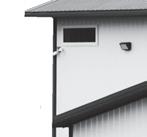
complaints and had become somewhat dilapidated. The city inked the deal with the pork plant owned by HyLife Foods to house more than 150 workers after the city acquired the hotel for $3.2 million. The pork plant leased it at $37,000 per

month plus about $13,000 in local tax. The city’s Port Authority took a bond for $4.5 million to cover the purchase plus another $1 million for repairs and renovations.
DeMars and Walgenbach have both demonstrated success in build-





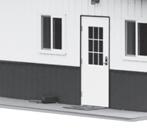


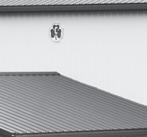





ing, construction and renovations in the local area with other real estate and commercial projects. DeMars owns a construction business and Walgenbach owns a local electrical business and another communications company. The project accompanies other





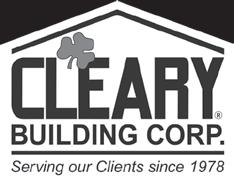

major area projects such as the former Dutler’s Bowling Alley, which has fallen into major disrepair over the last several years. This may also alleviate some of the high cost rental conditions facing local residents since the tail end of the pandemic. The develop-


ers also think it will open up more job and business opportunities. One of the hotel businesses located along Highway 169, the Riverfront Inn & Suites, has been home to several longterm guests, many of whom struggle to find housing.



Al Christensen Tri County Solid Waste
507-381-9196
Hello Everyone, in the last article we left you with a challenge to embrace our wonderful winter… well I think I’m ready to release my embrace and say thanks for stopping by to ol’ Man winter… I’m not ready to mow lawn or fight mosquitoes yet but I’m ready for a change or maybe my snow shovel is just begging for mercy! Our hazardous chemicals topic this month was prompted by the Minnesota Pollution Control Agency (MPCA) and I was glad they suggested it…The first item we should discuss is Mercury – it’s an oldie but still relevant… Mercury has
taken a back seat lately to PFAS or forever chemicals. As much as PFAS would like to steal the show, mercury is also a forever chemical that will bioaccumulate in our soil, water and our bodies over time. Mercury is a naturally occurring element that is toxic to living organisms. It is an endocrine disruptor, which causes many problems in our bodies once it reaches a certain amount. It is a silvery, liquid metal that does not break down or decrease its toxicity like some other pollutants. Mercury can be found in a number of products such as fluorescent light tubes, compact fluorescents (pigtail shaped) high-pressure sodium & metal halide lights. It can also be found in some skin-lightening creams
– please look for “calomel”, “mercuric”, or “mercurous” on the labels. Some of our residents may still have old mercury thermometers. Old thermostats and barometers will also contain mercury. Although we receive less of mercury containing devices these days, our local hazardous waste facilities still receive a steady stream of mercury devices, so please do a thorough scan of the house and garage for these items and bring them to your local hazardous waste facility. I would also like to give a heads up to our small businesses that may have mercury-containing devices – there is currently MPCA grant funds available to cover the disposal costs of your mercury devices so please contact me
asap if you would like to get set up for proper disposal, the funds are a first come – first serve basis.



I will list a few other potentially harmful chemicals that we can buy off the shelves shortly but let us do a brief deep dive into one of them… Sodium hypochlorite otherwise known as Bleach. Most of the time it is safe to use for common household cleaning in the laundry or bathroom etc.. However, the first thing to know is that chlorine should never be mixed with other cleaning chemicals – NEVER. That rule also applies to most of the other household cleaning products but mixing chlorine with other chemicals can become deadly. Chlorine purchased
off the shelf is usually 3 to 6 percent diluted with water but you will see a change or another bleach option on the shelf in 2023. Recently, the Clorox Company won a sustainability award for offering a new innovative way to supply its customers with the need for bleach. In an effort to use less plastic and save money on shipping costs, the Clorox Company will offer its bleach in smaller concentrated cap-refills. It makes sense – why pay to ship water?
So the Clorox Company would like to sell a durable plastic container that we can reuse repeatedly and just refill it when we need to. It is a great idea but we need to be mindful of storing and using concentrated chemicals. A quick list of other harmful chemicals
that we need to use extra caution with is - muriatic acid for cleaning concrete, hydrochloric acid for cleaning drains, sodium hydroxide (oven cleaners) or potassium hydroxide (cleaning agent or soap making). Please always read directions before using these everyday products or ask a trained professional. Quick reminders – our 2023 Tri County collection schedule is on our County web sites. The Blue Earth County hazardous waste facility will be closed in March for cleaning and will re-open in April. Please visit us at - www.tricountyrecycling.org or the Nicollet County waste wizard for recycling & waste information or give us a call at 507-381-9196. Please make every day Earth Day!

The Annual meeting for Granby Township will be held on March 14 th 2023 at the Marvin Krohn seed office at 43527 Cty Rd 4, Nicollet Mn 56074 at 7:00P.M. The regular monthly meeting will follow the Annual meeting.

Clerk Bob Wills
of Minnesota. The resolution to authorize the deed restriction requirement was passed.
No-mow May was a program that was initiated last year, according to Prafke. Prafke asked the council to pass adoption of the program and said a deadline to mow of June 12 was to be enforced. Prafke said it would give someone a couple of weekends to get it done. In order to avoid compliance notices for not mowing, residents in Saint Peter will have to register for the nomow program and comply by the June deadline. According to Bee City USA, an advocacy group, No Mow May is a conservation initiative first popularized by Plantlife, an organization based in the United Kingdom (UK), but which is gaining traction across North America.
The proposed goal of the initiative is to allow grass to grow to create a habitat and forage for early season pollinators.
A budget was proposed for $1,500 to create yard signs, other marketing efforts and administration of the registration process. The resolution, first proposed in 2022, was passed by the council. The council also discussed the improvements for Parkview Manor and additionally the administration contract for the project there. Prafke explained that the council received two separate grants for this project, primarily to replace the roof and HVAC systems and a couple other lower cost systems. The funding included a Minnesota block grant and a federal earmarked grant from Congress. The total amount was about $800,000. The recommended action in front of
in specific states. Landowners should check with local FSA or Natural Resource Conservation (NRCS) offices for details. Local Soil and Water Conservation District (SWCD) offices are also a good resource for these special initiatives that involve both USDA and state resources.
• Grassland CRP — The Grassland CRP program is a newer initiative and is a working-lands program that is available to landowners, ranchers and farmers. The goal of the Grassland CRP initiative is to protect grassland, rangeland and pastures, while maintaining these areas as working grazing lands. These goals are reached by introducing plant species and management practices that provide biodiversity of plant and animal populations, as well as providing important carbon sequestration benefits. There are currently more than 5 million acres enrolled in the Grassland CRP program, including more than 3.1 million new acres that were accepted into the program in 2022. The Grassland CRP program has become quite popular with landowners and ranchers in the Western and Plains states. Interested parties should check with their local FSA or NRCS office for more details on Grassland CRP.
The initial goal of CRP was to reduce soil erosion on highly erodible cropland and to help curb the overproduction of farm commodities. Secondary objectives of CRP included improving water quality, fostering wildlife habitat and providing income support to farmers. More recently, the CRP program has been identified as a valuable tool through the fed-
eral government as a method to promote carbon sequestration on working farmland. Currently, getting farmland enrolled into the CRP program is being challenged by very positive economic returns from crop production and by tight grain supplies worldwide, as well as by higher cash rental rates for farmland.
As of Dec. 31, 2022, there were a total of just under 23 million acres enrolled in the CRP program, which is about 4 million acres below the maximum level of 27 million acres for 2023 that was established in the last farm bill. Of the total CRP acres, approximately 8.45 million acres are enrolled under a General CRP contract, 7.16 million acres in Continuous CRP and 6.3 million acres enrolled in the grassland program, with the balance of the acres in CREP, wetlands and other special CRP initiatives. The 2018 Farm Bill set a maximum of 27 million acres, and the USDA would like to reach this goal by the end of the current fiscal year on Sept. 30, 2023.
Current CRP contracts will expire on approximately two million acres on Sept. 30, 2023.
The total annual federal budget outlay for the CRP program in the 2022 fiscal year was just over $1.83 billion, including $1.73 billion that was paid in annual rental payments to landowners with acres enrolled in the CRP program. In addition, the USDA allocated $68 million in cost-share payments to landowners for establishing desired practices and plant species on CRP acres and $31 million as special incentive payments through the Continuous CRP program. The overall aver-
age rental rate for land in the CRP program in the U.S. in 2022 was $78 per acre. This includes average CRP rental rates of $57 per acre for General CRP, $140 per acre for Continuous CRP, $172 per acre for farmable wetlands, $209 per acre for CREP and $16 per acre for Grassland CRP.
Summary
The future of the CRP program is likely to garner considerable discussion during the next few months, as the next farm bill is being developed and written. The CRP program has a long and successful history of preventing soil erosion, improving water quality, enhancing wildlife habitat and aiding in carbon sequestration. While it may seem quite logical to utilize expansion of the CRP program to reach further goals related to environmental stewardship and carbon sequestration, there could be some obstacles in accomplishing those goals. Commodity prices for corn and soybeans and farm profit levels in the past two years have been at the highest levels in the past decade, resulting in higher land rental rates in many areas. This makes it difficult to convince farmers and landowners to take farmland out of production to enroll in the CRP program or to re-enroll some expiring CRP acreage, unless there are some added financial incentives.
For more information on the current CRP enrollment, expiring CRP acres, rental rates, etc., landowners and farmers should contact their local USDA Farm Service Agency office or refer to the USDA CRP website at: http://www.fsa. usda.gov/crp.

Spring is just around the corner, which means we have two great symposiums coming up! We'll have paper registration copies at the meeting if you prefer to mail them, but I'll be providing the details in this email as well.
Our next meeting is on Tuesday, March 21 at 6:30 PM at the New Ulm Public Library. We'll be having a planning meeting, so bring the topics you are interested in learning more about or speakers you would like to see - kudos to those of you who already sent some suggestions my way!
Now the upcoming symposiums:
First is the The Friends of the Boy in Blue Civil War Memorial's Civil War Symposium. The symposium
will be held on Saturday, March 25th from 9 am to 5 pm at the Morson-Ario-Strand VFW, 1900 No. Riverfront Dr. in Mankato.
The 10th annual symposium theme is: The Tide Turns – 1863, and features a full day of speakers, costumed interpreters, Civil War era music, exhibits, books and authors, panel discussions, and more. Special guest speakers are author Tamara Thayer will present The Mystery of Barbara Fritchie: A True Patriot and Col. Gary Carlberg will present The Controversial Major General George Meade.
Registration is $30/adults and $20/students or virtual. Friends of the Boy in Blue 2023 members receive a $5 discount on registra-
the council was to approve Prafke’s and Mayor Shannon Nowell’s ability to enter into a grant administration contract with Southwest Minnesota Housing Partnership (SWMHP) for both grants.
The city rarely administers grants for these projects due to their complexity, Prafke told the council.
“It’s something we do very, very, very rarely,” he said. “This is something that, while we could do, is something that is just a little bit outside our strength.”
The contract will help the city more efficiently manage and navigate the requirements of compliance for the grants. Prafke explained the actual improvement phase is likely to take place in 2024. “I do want to mention that these are really important dollars,” Prafke said.
“And to meet the requirements of the federal objectives for this, which is really just driven by benefiting people with low to moderate incomes.”
Parkview Manor, as Prafke explained, is “geared toward seniors” and low income members of the community.
Councilmember Kari Johnson asked if the council would be involved in the bidding process like other city projects.
Prafke responded that it is not likely. Most of the authorization for this will likely be handled by the Housing Redevelopment Authority (HRA).The city council passed the resolution.
The city council discussed a resolution to authorize 2022 MnDOT delegated contract process agreement for the Commissioner of Transportation to act as agent for the City of Saint Peter in
receipt of federal transportation funds.
The council approved the resolution.
The city approved a resolution for refuse hauling contracts and providing host approval for bond issuance for Sunrise Meadows housing facility.
The resolution to approve a tobacco license for a business at 624 S. Minnesota Ave., known as Freedom gas station. A background check was completed and the city recommended approving the license. The business was recently sold to a new owner and Bradley DeVos wanted to make sure that it was clarified that the application is just for the new ownership, not a further expansion of products.
The council took a moment to pay respects to former City Councilmember Margee Nelson. City reports were read and the meeting adjourned.
tion. Registration includes lunch and must be received before March 20, 2023. Download the registration form: https://www.boyinblue. org/news-events. Online payment option available. Admission at the door does NOT include lunch and only if space is available. For more detailed information and a full program listing, visit: www.boyinblue.org or email: contact@boyinblue.org
Up next is the Minnesota Civil War Round Table Symposium. The symposium is set for April 1, 2023 and is titled Feeding War with Mule, Ship, and Locomotive, it will be a great program. You can register online at https://tccwrt. com/meetings/symposium/
Community Insurance Agency held their annual crop insurance update meeting on the evening of Tuesday, Feb 28 (Rescheduled from Feb 22 due to the snow storm) at the Lafayette Community Center. They would like to thank everybody for attending and wish all farmer’s a successful and safe 2023!

Mankato, Minn. – The Mankato Symphony is pleased to announce the winners of the inaugural Young Artist Competitions, held on Saturday, Feb. 25, at Gustavus Adolphus College in St. Peter, Minn. Nearly two dozen elite high school musicians from across the state competed in the event, which was made possible through a generous gift from the Mary Suedbeck Fund of the Mankato Area Foundation. Students competed in both solo and ensemble categories. A brass quartet from Waseca High School received first place in the ensemble category. The quartet, comprised of Ethan Stenzel, Mason Jes, Noah Dahle, and Elias Nevalainen, performed Londonderry Air, arr. Nigel Williams. Waseca High School music teacher Devon Lawrence served as the group’s chamber coach. Each member of the quartet won $500 and has an opportunity to perform side by side with the Mankato Symphony Orchestra this fall.
The top soloist prize went to pianist Jacob Taggart, of Blaine, Minn., for his performance of Tchaikovsky’s Piano Concerto No. 1, 3rd Movement. In addition to win-

ning $1,500, Taggart has the opportunity to perform his solo with the Mankato Symphony Orchestra this fall. Cellist Sophia Alexander, of Minneapolis, Minn., won second place and a $750 prize with her performance of Tchaikovsky’s Rococo Variations. Judges also awarded honorable mentions to bassoonist Sam Geisler, of St. Paul, Minn., and two violinists, Charity Duran of Brooklyn Park, Minn., and Vladimir Tsiper, of Eagan, Minn.
“It was truly wonderful to hear so many talented high schoolers last Saturday. I could tell they had spent many hours preparing their pieces for competition,” said Executive Director Bethel Balge. “I am so pleased the MSO is able to offer such an incentivizing event. We are very thankful to the donor who made this all possible!"
The goal of the Young Artists Competition is to encourage high schoolers to achieve excellence in the arts and to foster musical collaboration between students.
“Music teaches so much, from the practical side of problem-solving and perseverance to the emotional side of forging life-long friendships and sharing an art form that can
reach across borders and barriers,” said Competitions Chair Megan Wehrwein. “Nurturing these qualities is even more important than the accolades and prizes, but it’s also nice to be able to offer incentives and recognition for students who go above and beyond in their achievements.”

The Mary Suedbeck Fund, which provided the financial backing for the competition, was established in honor of the grandmother of the grantor. Suedbeck struggled to raise three children through the Great Depression with a husband who became completely disabled in his twenties. A Blue Earth County resident, Suedbeck ran a boarding house, took in laundry, and had little time for the more gracious aspects of life like art or music. She died at age 99. The fund was established in her memory so that others might pursue dreams that she and many of her generation were by circumstances denied.
For more information about next year’s competition, visit mankatosymphony.org/competitions or contact Competitions Chair Megan Wehrwein at competitions@ mankatosymphony.org
The Nicollet County Ledger is more than a newspaper. It’s THE place you turn to find out what’s going on in the community, and it’s where you learn about decisions that affect you. It’s the place to catch up with the people you know. It’s a forum for sharing your opinions on issues important to you, and it’s the place to find out what your neighbors think.Notice to Granby Township residents

location in
Saint Peter, MN (February 16, 2023) – The Nicollet County Historical Society (NCHS) has been selected to benefit from the Hy-Vee Reusable Bag Program for the months of March and April, 2023.
The Hy-Vee Reusable Bag Program, which launched in October 2019, facilitates community support with the goal to make a difference in the communities where shoppers live and work.
NCHS was selected to benefit

from the program for the months of March and April by store leadership at the Hy-Vee located at 1002 Old Minnesota Avenue in St. Peter MN. During this benefit period, NCHS will receive a $1 donation every time the $2.50 reusable Red “My Heart” Bag is purchased at this location, unless otherwise directed by the customer through the Giving Tag attached to the bag.

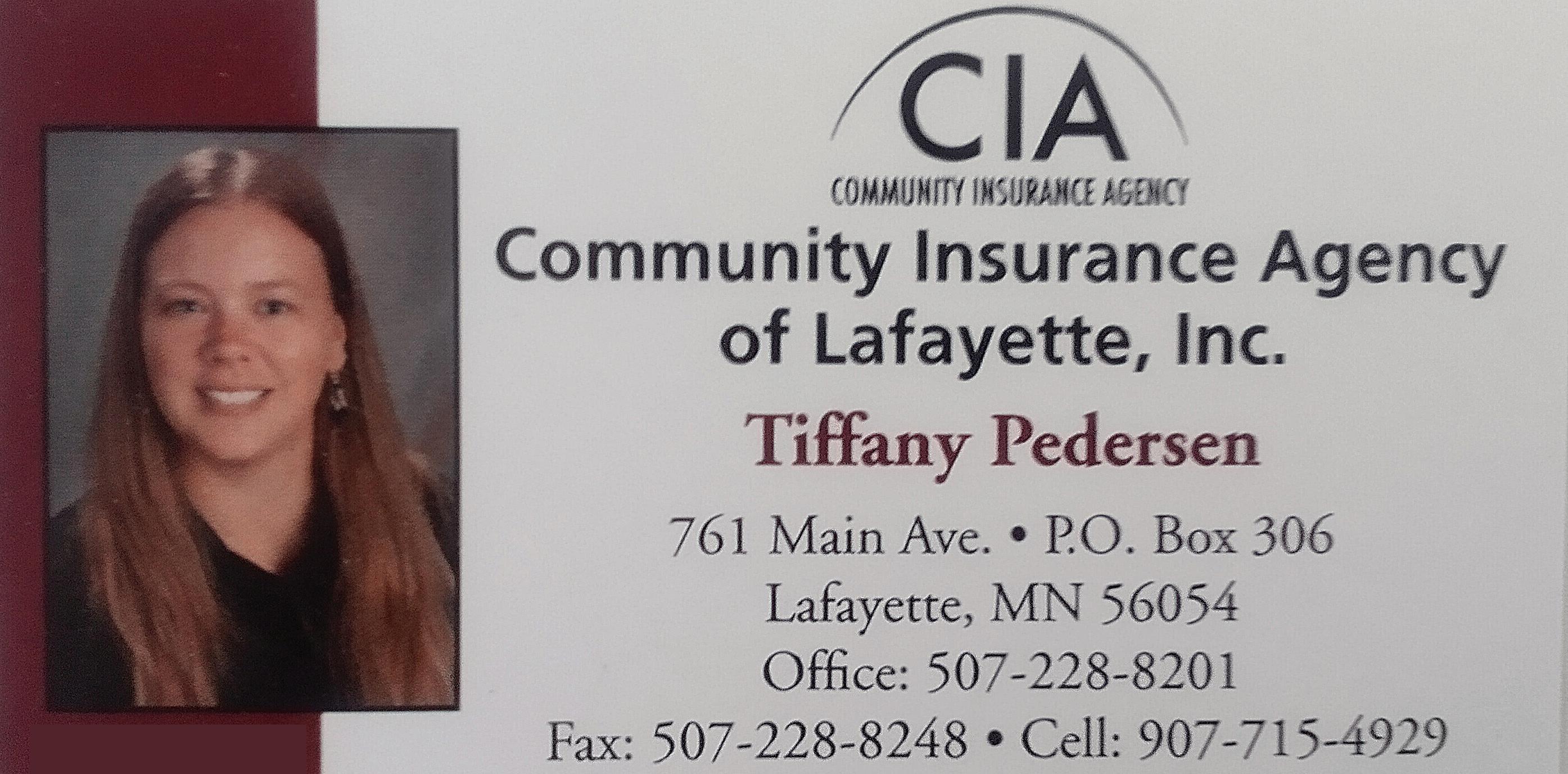
The Nicollet County Historical Society is a (501(c)(3) charitable nonprofit based in Saint Peter,

Minnesota. The Nicollet County Historical Society was organized on August 22, 1928. Since then, we’ve been gathering, preserving, and sharing the varied history of the people, places, and events that have shaped Nicollet County. We’re a community asset and leader engaging and educating the public and fostering an appreciation of Nicollet County History. . For more information on the Hy-Vee Reusable Bag Program, visit hy-vee.2givelocal.com.
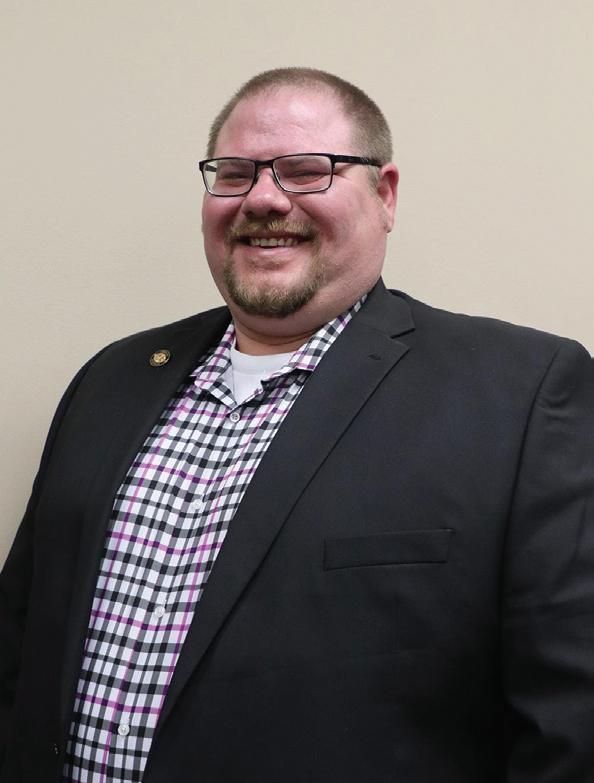
I after a special district caucus held on March 3. Pagel assumes the role immediately and will hold the position until November and the MFBF Annual Meeting, when there will be another district caucus to fill the director role for one year of a three-year term vacated by previous director Keith Allen. Allen resigned from the role after accepting a new job with the office of Rep. Brad Finstad (MN-01).
“Farm Bureau has provided me with many opportunities and I am excited to give back to the organization in this new role,” said Pagel. “I’m excited to take the leadership skills I have learned and put them into action representing members in my district.”
Jeff Pagel
Dairy farmer Jeff Pagel of Eyota in Olmsted County has been elected to the Minnesota Farm Bureau Federation (MFBF) Board of Directors as the Director for District
A third-generation dairy farmer, he works alongside his wife Chandra, parents, brother and sister-in-law and niece to milk dairy cows and farm 350 acres.